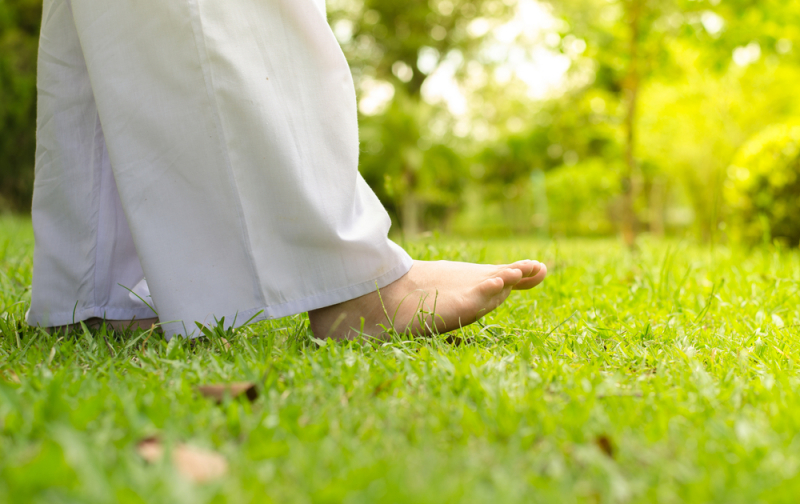Walking Meditation
Walking meditation is a mindfulness technique that combines walking's physical experience with the concentrated concentration of a meditative state. Walking meditation brings meditation to life by allowing you to focus on the mind-body connection as you pace or walk around a room or outside. You choose your walking pace and the length of your session using this type of meditation. During a walking meditation session, the practitioner walks for a set amount of time, focusing on the movements and physical sensations of the body with each step.
Walking meditation, also known as kinhin, is a Buddhist practice that involves movement and intervals of walking in between extended periods of seated meditation. The practice is common in numerous Theravada and Mahayana Buddhist traditions in varied forms. Practitioners often move clockwise around a room while making a fist with one hand and grasping or covering the fist with the other hand. Walking meditation involves taking one step after each complete breath. Walking meditation can be done at a slow (many steady steps per breath) or vigorous (nearly running) pace.
Walking meditation might assist you in staying in the present moment. Throughout a session, you bring your attention inward while your body moves and your mind wanders, strengthening your concentration and awareness of your physical surroundings and mental condition. It can be difficult to find time for yourself in today's hectic world. Walking meditation can help you slow down racing thoughts and resist life's numerous distractions, giving you more time to focus completely on your mental and spiritual requirements. In this type of meditation, you pay attention to all of your bodily sensations while walking, similar to a moving body scan in which you inventory your physical being. Take note of how your feet feel when they make contact with the ground, how your arms swing with each stride, or how your posture aligns as you move slowly.
Spend a few moments standing motionless before beginning to walk. Allow your attention to be drawn to your body. Deep breaths, inhaling deeply into the belly. Concentrate solely on the sensation of breathing. Allow the breath to return to normal and observe it going on its own for a few moments. Bring your consciousness back to your body, notice how it feels as you stand, and become aware of all the sensations going on in it.
Walk at a comfortable, moderately slow yet steady pace. As you walk, pay attention to the sensations in your body. It is natural for your attention to be drawn to the sights around you as you walk, but keep your focus on what is going on inwardly. Walking involves the complete body, from the alternation of the left and right foot to the swinging of your arms and hips. Let go of any tightness you notice anywhere in your body. Allow that area of your body to unwind. Relax your ankles, belly, shoulders, arms, neck, and entire body. Allow your hips to swing freely. Walking will become more fun as you do this.
You can scan your body at random, moving your awareness from place to place, or you can scan your entire body systematically, traveling from the soles of your feet to the top of your head, experiencing the feelings of movement. The most important thing is to maintain your awareness of your body's feelings, effortlessly bringing them back when your mind wanders.








